Read more about
Nanchang Jiangxi.
Jiangxi province East China
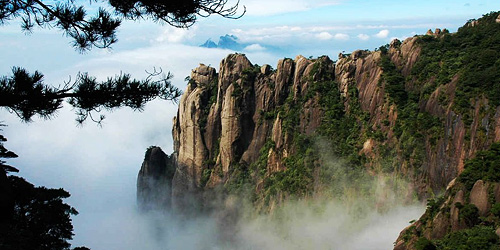 |
| Jiangxi province East China |
Jiangxi province is located on the southern banks of the middle and lower reaches of the Yangtze River. It played an important role in Chinese revolutionary history and has outstanding natural scenery.
To people in China, Jiangxi is a ‘red’ province, synonymous with heroic feats and revolutionary spirit. Its provincial capital Nanchang is known as the ‘cradle of the people’s army’, Jinggang Mountain is called the ‘cradle of the Chinese revolution’ and Ruijin lays claim to the moniker ‘cradle of the People’s Republic’. The events that took place in the mountains and forests of this province during the tumultuous first half of the 20th century ultimately shaped the destiny of modern China.
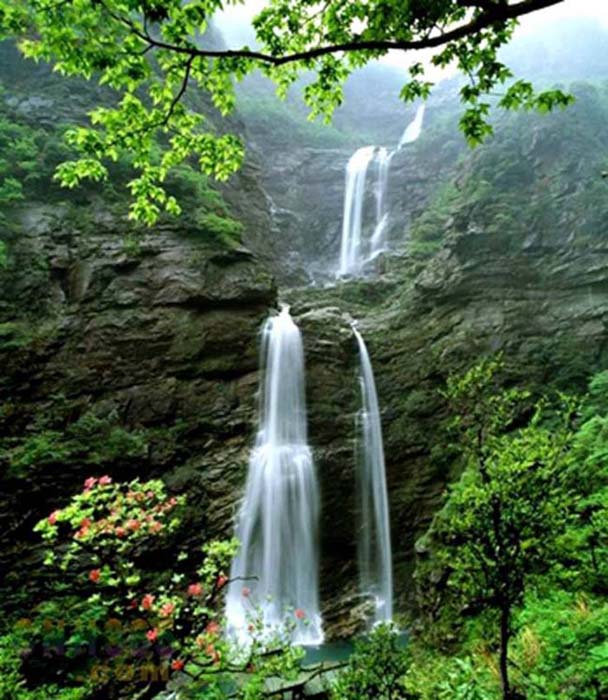 |
| Jiujiang county, Mount Lu (Lushan Mountain) East China |
Visitors today will have a far more peaceful experience of
Jiangxi, which is also a ‘green’ province. It offers a wonderful natural ecological environment with picturesque mountains, including
Lushan
Mountain, Jinggang Mountain, Sanqing Mountain, Longhu Mountain and Mingyue Mountain, and clear lakes, such as Poyang Lake, Tuolin Lake and Fairy Lake.
The rich culture of Jiangxi is exemplified in Jingdezhen, known as the world’s capital of porcelain. Porcelain-making was elevated to a prestigious art form in Jingdezhen over the course of more than a thousand years. Here, you can see the world’s best representation of this beautiful Chinese craft.
Tourism: Near the northern port city of Jiujiang lies the well-known resort area of
Mount
Lu. Also near the city are the Donglin (East Wood) Temple and the Tiefo (Iron Buddha) Temple (???), two important Buddhist temples.
Near the small city of Yingtan is the resort area of Longhushan, which purports to be the birthplace of Taoism and hence has great symbolic value to Taoists. The region has many temples, cave complexes, mountains and villages.
The Lushan National Park has been a UNESCO World Heritage Site since 1996.
In 2007, Jiangxi (specifically the Zhelin Reservoir, about 40 kilometres (25 mi) from Nanchang) was the filming location for the fifteenth series of the American TV show Survivor.
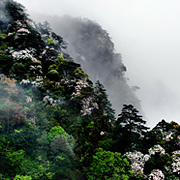 |
| East China Jinggang Mountain |
Jinggang Mountain
In the west of the Jiangxi province, Jinggang Mountain mixes natural beauty with revolutionary history. The area’s historical importance and scenic grandeur earned it a depiction on China’s 100-yuan note.
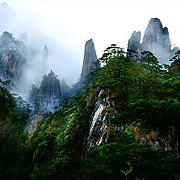 |
| East China Sanqing Mountain |
Sanqing Mountain
The three main peaks of Sanqing Mountain are said to represent three of the most important deities of Taoism. The striking granite landscape, diverse forest, and concentration of strange-shaped pillars and peaks combine to form a fantastical landscape, especially when it’s shrouded in mist.
The Gan River dominates the province, flowing through the entire length of the province from south to north. It enters Lake Poyang in the north, the largest freshwater lake of China; that lake in turn empties into the Yangtze River, which forms part of the northern border of
Jiangxi. Important reservoirs include the Xiushui Tuolin Reservoir in the northwest of the province on the Xiushui River, and the Wan'an Reservoir(zh) in the upper section of the Gan.
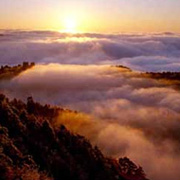 |
| East China Lushan Mountain |
Lushan Mountain
Lushan Mountain is located where the majestic Yangtze River meets the vast Poyang Lake. It has a marvellous landscape and is famous for its waterfall and springs, the former of which is highly regarded in China. The area is also an important centre for research on glaciers and is home to large numbers of migratory birds.
Jiangxi has a humid subtropical climate with short, cool, damp winters, and very hot, humid summers. Average temperatures are about 3 to 9 °C (37 to 48 °F) in January and 27 to 30 °C (81 to 86 °F) in July. Annual precipitation is 1,200 to 1,900 millimetres (47 to 75 in), much of it falling in the heavy rains occurring in late spring and summer.
Nanchang, the provincial capital and the most densely populated city, is one of the largest Chinese metropolises. Nanchang is the hub of
Jiangxi civilization throughout its history, which plays a leading role in the commercial, intellectual and industrial and political
fields. While Ganzhou is the largest subdivision of Jiangxi.
See ratings  af East China , Do you have rice or praise for this Bed and Breakfast, Write your review
af East China , Do you have rice or praise for this Bed and Breakfast, Write your review 